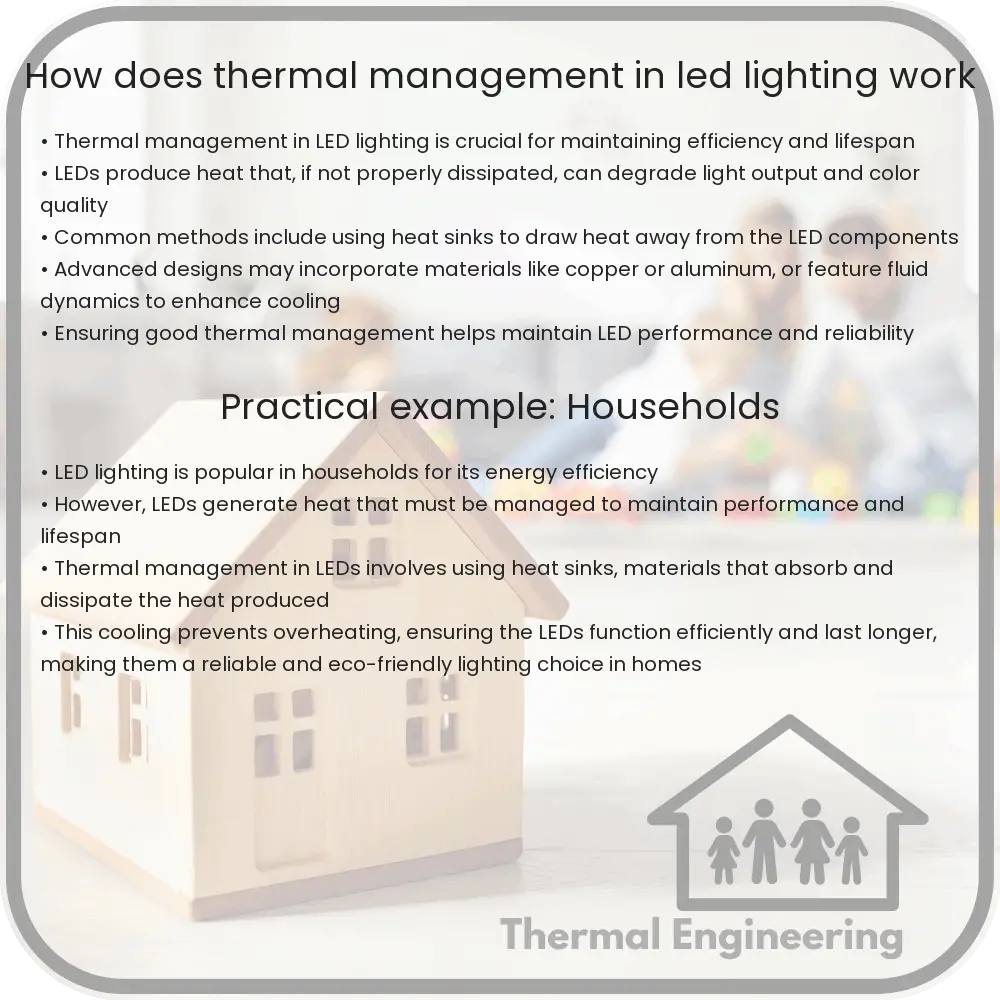Explore the essential role and methods of thermal management in LED lighting to enhance performance and lifespan.

Understanding Thermal Management in LED Lighting
Light Emitting Diodes (LEDs) are a popular choice for lighting due to their efficiency and longevity. However, like all electronic devices, LEDs generate heat during operation. Effective thermal management in LED lighting is crucial for maintaining efficiency, performance, and extending the lifespan of the light. In this article, we’ll explore the basics of how thermal management in LED lighting works.
The Source of Heat in LEDs
Although LEDs are more efficient than traditional incandescent lamps, they still generate heat. The primary source of this heat is the junction within the LED. The junction is the part of the LED where the electric energy is converted into light energy. Not all the electrical energy is converted into light; a significant portion is converted into heat.
Impacts of Excessive Heat
Excessive heat can adversely affect LEDs in several ways:
- Reduced Efficiency: As the temperature of the LED increases, the efficiency at which it converts electricity into light decreases.
- Color Shift: High temperatures can also lead to a shift in the color of the LED light, typically towards the blue end of the spectrum.
- Reduced Lifespan: Perhaps the most significant impact of excessive heat is the reduction in the lifespan of the LED. The components of an LED can degrade faster when operating at higher temperatures.
Thermal Management Solutions
Managing the heat generated by LEDs is essential for maintaining their performance and lifespan. Here are some common thermal management strategies used in LED lighting:
- Heat Sinks: The most widely used method for cooling LEDs is adding a heat sink. A heat sink is a passive heat exchanger that absorbs and dissipates heat from the LED. Typically, it is made from a thermally conductive material like aluminum. The design of the heat sink, including its size, shape, and the material, significantly affects its efficiency.
- Thermal Interface Materials (TIMs): TIMs are materials placed between the LED and the heat sink to enhance the thermal transfer efficiency. These materials help fill any air gaps between the heat sink and the LED, lowering the thermal resistance and allowing more effective heat transfer.
- Active Cooling Systems: In high-power LED applications where passive cooling might not be sufficient, active cooling systems such as fans or liquid cooling are employed. These systems use energy to actively remove heat from the LED, maintaining an optimal operating temperature.
- PCB Design: The design of the Printed Circuit Board (PCB) on which LEDs are mounted can also affect thermal management. Using thermally conductive PCB materials can help spread the heat more evenly and reduce hot spots.
Conclusion
Thermal management is a critical aspect of LED lighting technology. By effectively dispersing the heat generated by the LEDs, manufacturers can enhance the performance, efficiency, and durability of their products. Whether through passive methods like heat sinks and advanced PCB designs, or through active cooling systems, managing heat is essential for the sustainable operation of LED lights.
Understanding these basic principles aids in appreciating the engineering behind LED lighting and its importance in developing sustainable and efficient lighting solutions.